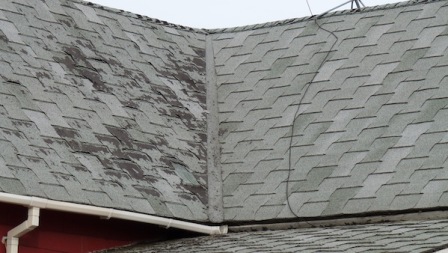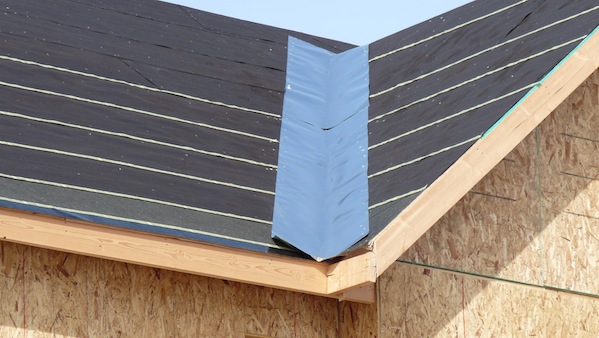Mastering Roof Inspections: Flashing, Part 5
by Kenton Shepard and Nick Gromicko, CMI®
The purpose of the series “Mastering Roof Inspections” is to teach home inspectors, as well as insurance and roofing professionals, how to recognize proper and improper conditions while inspecting steep-slope, residential roofs. This series covers roof framing, roofing materials, the attic, and the conditions that affect the roofing materials and components, including wind and hail.
As you know, the IRC calls for flashing to be installed at areas where the roof changes slope or direction. We’re going to look at some examples of these areas in more detail.

Valleys are created where two roof slopes meet. Valleys are especially vulnerable to leakage for two reasons:
- first, the combined runoff from both roof slopes is concentrated in the valley; and
- second, the roof-covering materials are interrupted by the change in roof direction.
There are two basic types of valleys: open and closed.
Open Valleys
Open valleys don’t depend on the roof-covering materials to keep runoff from penetrating the valley. Instead, the valley is lined with metal flashing. The roof-covering material is held back 2 to 6 inches from each side of the centerline, so some of the flashing is visible.


You may see a few homes with open valleys lined with rolled roofing or something similar. These valleys will not last as long as valleys lined with metal flashing, so this condition should be mentioned in your report.
Unless the valley lining is damaged or near the end of its life, you won’t recommend replacement because it’s really a quality issue instead of a defect.

Flashing may be an uncrimped type, as in this photograph…

…or a type which has a crimp down the center to help keep fast-flowing runoff from flowing across the valley and up beneath the roof-covering material on the adjacent slope, called “cross-wash.”
Valley metal may have other profiles, depending on which roof-covering materials are used.

Open valleys have the advantage of carrying away debris more readily than closed valleys. Here’s an example of an open valley that’s practically a closed valley! You can see that this type of valley would easily trap debris.

Here’s an open valley that IS a closed valley! You never know what you might find!


You may see similar roof-covering materials with different kinds of valley flashing installed using a variety of methods.


You probably won’t know the manufacturer’s recommended method and will just need to use your best judgment in deciding whether the valley flashing method used will prevent leakage.
If you see a valley that doesn’t look right, but you’re not sure it's defective, your report should include a narrative disclaiming proper installation and recommending a specialist's inspection.
Closed Valleys

Closed valleys are those in which no flashing is visible in the valley. In a true closed valley, the roof-covering material is continuous across the valley and protects it from moisture intrusion.

But with some types of roof-covering materials, such as slate and tile, metal valley flashing may still be the primary moisture barrier, but may not be visible beneath the roof-covering material.

The terms can be confusing. Whether someone calls it an “open” or “closed” valley is not all that important. What’s really important is that you understand the different methods used to create valleys, and how these methods are likely to fail. If you understand the weak point of the materials and the methods, then you’ll know where to look for failure.


Closed valleys aren’t required to have metal flashing, but they should have additional underlayment lining the valley, preferably a couple layers of roll roofing.

**************************************************
Learn how to master a roof inspection from beginning to end by reading the entire InterNACHI series: Mastering Roof Inspections.
Take InterNACHI’s free, online Roofing Inspection Course
Mastering Roof Inspections
Roofing Underlayment Types
Inspecting Underlayment on Roofs
Fall-Arrest Systems
Roofing (consumer-targeted)
More inspection articles like this

